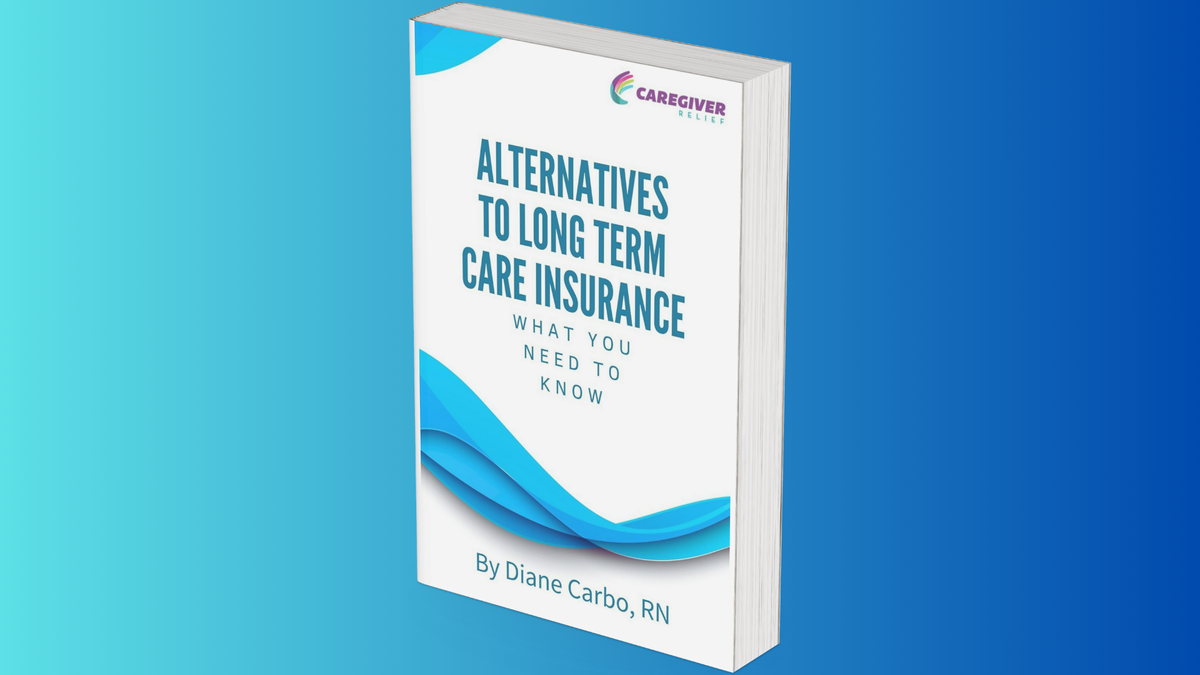How Much Does Long Term Care Insurance Cost?
Long-term care insurance costs vary based on age, health, coverage, and provider. Understand the factors that affect pricing, explore alternatives, and make an informed decision to protect your future. Learn what you need to know before committing to a policy.

Long-term care insurance has become an increasingly important part of financial planning for those heading into retirement. It’s a means to cover the costs of long-term health care services beyond what standard insurance policies provide, such as nursing home care, in-home health care, and unemployment. Having the right long-term care insurance can mean the difference between being able to pay for these services out-of-pocket or relying on family or other sources of help. An individual's health status and medical history significantly influence the pricing and availability of long-term care insurance, with pre-existing medical conditions potentially leading to higher premiums or specific exclusions.
It’s important to note that long-term care insurance isn’t just for those who are elderly or have disabilities. Even healthy individuals may require long-term care due to an accident or unforeseen illness, and it’s never too early to start thinking about long-term care insurance. Ultimately, the cost of long-term care is the same regardless of how it’s financed, so it’s important to think through the best way to prepare for potential long-term care costs.
The cost of long-term care insurance can vary greatly depending on a number of factors, such as age, health, location, and desired coverage. There are also many different types of long-term care insurance plans available, which can make it difficult to understand how much does long term care insurance cost. In this guide, we’ll discuss the different factors that impact the cost of long-term care insurance, different types of plans available, common costs, ways to lower costs, and tips for choosing the right plan.
This video addresses long term care and other options
Understanding Long-Term Care and Its Costs
Long-term care refers to the assistance individuals may need with daily living activities, such as bathing, dressing, and grooming, as well as medical care, like wound care, medication management, and rehabilitation therapy. This type of care can be provided in various settings, including home, community, and institutional settings. Understanding the scope and costs of long-term care is crucial for effective personal finance planning. Whether you need help with basic daily tasks or more intensive medical care, the expenses can add up quickly, making it essential to consider long-term care insurance as part of your financial strategy.
Average Costs of Long-Term Care Without Insurance
The costs of long-term care can be substantial, with average monthly costs ranging from $4,000 to $10,000 or more in the US, according to the Genworth Cost of Care Survey. For example, the average annual cost of a private room in a nursing home is around $105,850, while the average cost of a home health aide is between $50,000 and $70,000 per year. These figures highlight the financial burden that long-term care can impose, making it clear why planning ahead is so important. Without insurance, these costs can quickly deplete savings, underscoring the value of having a long-term care insurance policy in place.
Types of Long-Term Care Services
Long-term care services can include a wide range of support options to meet various needs:
- Assistance with daily living activities: Tasks such as bathing, dressing, and grooming.
- Medical care: Services like wound care, medication management, and rehabilitation therapy.
- Home health care: Including home health aides and adult day care services.
- Assisted living facilities and nursing homes: Providing residential care for those who need more comprehensive support.
- Respite care: Temporary relief for family members or caregivers who need a break from their caregiving duties.
Understanding the different types of long-term care services available can help you make informed decisions about the kind of care you or your loved ones might need in the future.
Importance of Planning for Long-Term Care
Planning for long-term care is essential, as it can help individuals protect their assets and maintain their quality of life as they age. Long-term care insurance can be a valuable component of this planning, providing financial protection and peace of mind. By securing a long-term care insurance policy, you can ensure that you have the resources to cover care-related expenses without depleting your savings or relying heavily on family members. This proactive approach can make a significant difference in your financial stability and overall well-being.
What Factors, Including Health Status, Affect the Cost of Long-Term Care Insurance?
When determining the cost of a long-term care insurance policy, there are several factors that will be taken into account. These may include the age of the applicant, the scope of coverage desired, the overall health of the individual, and any special conditions or illnesses that may affect future care needs.
For example, a younger applicant who is in good health will likely pay a lower premium than an older applicant with multiple health concerns. Additionally, individuals who choose to purchase more comprehensive policies will typically pay higher premiums than those selecting less coverage.
Below are some of the primary factors insurers consider when determining the cost of a long-term care policy:
- Age: Generally speaking, the younger an individual is when they purchase their policy, the lower their premium will be.
- Health: People in good health may qualify for preferred rates, while those with pre-existing conditions could pay a higher premium.
- Location: Insurance costs can vary significantly between states, so it's important to determine the cost of a long-term care policy in your area.
- Coverage: The type of benefits included in a policy, such as home health care, nursing home care, or assisted living, will impact the total cost of the premium.
When searching for the right coverage, it is important to compare different companies and plans to find the most affordable option. Remember, the goal is to find the best possible coverage at the lowest possible cost.
Different Types of Long-Term Care Insurance Plans
When it comes to choosing the right long-term care insurance plan, there are a variety of options available. These plans vary in terms of coverage, eligibility requirements, and cost. Here's an overview of what you should know about the different types of plans and how they could impact your overall cost.

Traditional Long-Term Care Insurance Plans
Traditional long-term care insurance plans require individuals to pay a certain amount each month in order to receive coverage in the future. There will be a waiting period before these plans start to cover costs, but after that the plans will pay out a certain monetary amount per day up to a predetermined limit. This type of plan is the most expensive and typically has the highest premiums, but also offers the most comprehensive coverage. Inflation protection is an important feature in these plans to preserve the real value of coverage amidst rising healthcare costs.
Hybrid Life Insurance/Long-Term Care Insurance Plans
These types of plans combine life insurance coverage with long-term care insurance benefits. The premiums can be slightly lower than traditional plans, but the coverage may be more limited. It's also important to note that these plans have a cash value component, meaning that if you do not use the long-term care benefits, you can still access the money in the form of a loan or withdraw it for other purposes.
Short-Term Care Insurance Plans
These plans are designed to provide coverage for a shorter amount of time than traditional plans. They typically cover only one or two years of care, but the premiums are much lower than traditional plans. This makes them ideal for those who may not need long-term coverage, but still want protection against potential future care costs.
Linked-Benefit Plans
Linked-benefit plans are another type of hybrid plan that combines life insurance with long-term care benefits. The main difference is that this option allows individuals to pay for more long-term care coverage than their life insurance allows. This is done by linking the policy to an annuity or other investment accounts, which are used to fund a pool of money to help pay for long-term care expenses. This type of plan is more expensive than traditional plans, but offers more flexibility and potentially lower out-of-pocket costs.
Knowing the different types of long-term care insurance plans available and how they could affect your overall cost is important when determining the best plan for you. Make sure to do your research and speak to an insurance agent to make sure you find the right option for your specific needs.
General Costs
Long-term care insurance (LTCI) is an important way to reduce the potential financial burden of long-term care. But understanding the costs associated with LTCI can be confusing, so it’s important to have a good understanding of the general costs before purchasing a plan. Understanding the role of human services in long-term care can also help in planning for these expenses, as these services often provide essential support and resources that can impact overall costs.
The cost of LTCI will vary based on a variety of factors, such as the type of coverage, the insurer, and the age of the person purchasing the policy. Generally, the younger a person is when they purchase the policy, the more affordable the premiums will be. Generally speaking, an individual in their 40s or 50s can expect to pay about $100-$300 per month for a comprehensive LTCI policy.
When considering the cost of LTCI, it’s important to factor in the cost of inflation. As time goes on and healthcare costs increase, so too will the cost of LTCI. It’s important to make sure that you are getting a policy with a premium payment that can keep up with inflation.
There are also costs associated with LTCI that you won’t necessarily see on your bill. For example, some policies may have a waiting period before benefits kick in or require a deductible to be met before benefits are paid out. It’s important to read the fine print of any policy to make sure you understand all the costs associated with the policy before signing up for it.
Policy Details and Their Impact on Costs
Waiting Period: How It Affects Costs
The waiting period, also known as the elimination period, is the amount of time an individual must pay for their long-term care services out of pocket before their insurance coverage kicks in. Opting for a shorter waiting period will lead to higher premiums, while a longer waiting period can result in lower premiums but higher out-of-pocket costs. Understanding the trade-offs between different waiting periods is crucial for selecting a policy that balances your immediate financial capabilities with your long-term care needs. By carefully considering the waiting period, you can tailor your long-term care insurance to best fit your personal finance situation and future care requirements.
How to Lower Costs
Long-term care insurance can be a costly necessity. Fortunately, there are some ways to lower the costs associated with this type of insurance policy.
One of the most common methods for lowering costs is through discounts and tax credits. Many insurers offer discounts for individuals who purchase long-term care insurance, as well as for those who have taken steps to improve their health. In addition, certain tax credits are available for those who purchase a qualified long-term care insurance policy.
Another option for decreasing costs is to look for policies with lower premiums. Premiums for long-term care insurance can vary significantly between policies, so it may be worth your while to comparison shop to find the policy that works best for your budget.
Finally, you may want to consider a policy that allows you to self-insure. Self-insurance typically includes setting aside funds in anticipation of future costs. This approach can often be more affordable than purchasing a full-fledged policy.
By doing a bit of research, shopping around, and taking advantage of discounts, you can decrease the cost of your long-term care insurance policy.
Age Affects the Cost of Long-term Care Insurance
Age is one of the major factors affecting the cost of long-term care insurance. Generally, the younger you are when you start shopping for a policy, the lower the cost will be. This is because you are less likely to need to use the coverage for a longer period of time if you purchase it when you're younger.
Insurers generally divide people into three age groups: those aged 18-50, those aged 51-65, and those aged 66+. Typically, the cost increases for those who fall into the last two age groups, although the exact cost will vary depending on the specific insurer.
The age-related cost increases reflect insurers' attempts to mitigate their risk in providing long-term care insurance. Since individuals who are older tend to be more prone to needing long-term care, the cost of their policies is higher in order to cover the greater risk.
Choosing to purchase a policy at an earlier age has several advantages. Not only does it lower the cost, but it also ensures that you can take advantage of the policy before your health condition worsens. Furthermore, since premiums are typically level for the duration of the policy, you will not have to worry about any future cost increases due to aging.

Tips for Choosing the Right Plan
Choosing long-term care insurance is a big decision. It is important to make sure you choose a plan that meets your current and future needs. Before you decide on a plan, consider the following tips:
- Review your finances: Make sure you understand your financial situation and assess how much you can afford to pay for premiums.
- Understand your needs: Think about what type of help you may need in the future and make sure any policy you consider offers that coverage.
- Think ahead: Consider how your needs may change over the years and look for a plan that can accommodate those changes.
- Shop around: Compare different policies and ask questions to make sure you are getting the most value for your money.
- Consult an expert: If you are unsure of what type of policy you need or if you want to make sure you are getting the best deal possible, consider consulting a licensed insurance broker.
Taking the time to research and shop around for the right policies will ensure you get the best possible coverage at the best possible price. Long-term care insurance can be complicated, so it's important to do your homework and make sure you are getting the policy that is best suited to your unique needs and budget.
Conclusion
Long-term care insurance is an important type of coverage for individuals who want to protect their assets and maintain their quality of life. The cost of long-term care insurance plans can vary depending on the coverage, age, and other factors, but typically range from a few hundred to several thousand dollars a year. Depending on the type of plan you choose, you may be able to save money by taking advantage of different discounts and tax credits available. When selecting a policy, it is important to consider your current needs as well as your future goals in order to find the best plan for you.
More articles you may like....


Our Resources section can help you find the information and tools that you need. We have courses, videos, checklists, guidebooks, cheat sheets, how-to guides and more.
You can get started by clicking on the link below. We know that taking care of a loved one is hard work, but with our help you can get the support that you need.
Click here to go to Resources Section now!







